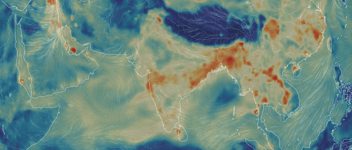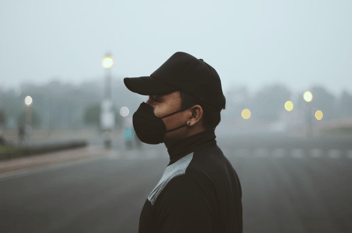From the City of Dreams to the City that Dreams of Clean Air: Air Pollution in Mumbai.
Mayanagri or the “city of dreams”, Mumbai, will soon be called the “city that dreams for clean air”. The financial capital of India, known for its bustling streets, magnificent architecture, vast seashores, and Bollywood has added one more recognition in the list; that of being the second most polluted city in the world.
According to the Swiss air tracking index IQ Air, which uses real-time data from the Central Pollution Control Board (CPCB), Mumbai has been ranked as the most polluted coastal city in India and second most polluted city in the world.
And guess what! It gives the city an edge for wrong reasons as Mumbaikars can no longer gloat over Delhi about clean air.
From the impact of industrialization to the growing number of vehicles on the roads, there are many factors contributing to this issue as the city makes headlines for the rising air quality levels. Let’s delve into the factors responsible for the rise in air pollution in Mumbai:
- Vehicular emissions
- Industrial emissions
- Construction activities
- Open waste burning
After a two year gap from Covid-19, the vehicular movement, constructions activities and industrial emissions are back in full swing leading to heavy smog in Mumbai. Here are other factors and their health impacts:
Inadequate government measures: While the Maharashtra Pollution Control Board and other authorities have implemented measures to curb air pollution, their effectiveness is a concern. How long can the sea be the only air purifier for Mumbai?
Poor Air Quality: Mumbai's air quality has been consistently above safe levels, with the city ranking as the second most polluted city in the world according to the Global Air Quality Index. The city's proximity to the sea, high population density, and urbanization exacerbate the air pollution problem.
Impact on health: The increasing air pollution levels in Mumbai have been linked to respiratory illnesses, allergies, and heart diseases, which can be life-threatening for vulnerable populations such as children, the elderly, and those with pre-existing conditions. The increase in particulate matter and other pollutants can have detrimental effects on human health and can even lead to premature deaths.
Conclusion:
The high levels of air pollution in major cities in India every year are not due to unforeseen factors. These pollution trends occur in patterns every year making us numb to the situation due to the ever rising magnitude of it.
The play of musical chairs between Delhi, Mumbai, Bhiwadi, and more appears more like a competition to make it in the top 5 of the most polluted cities in the world instead of attempting to make it out of the list. It leaves us with one crucial question:
Has India made up its mind to remain in the top 5 most polluted cities in the world?
References:
https://www.moneycontrol.com/news/india/why-mumbai-is-hitting-the-headlines-for-air-pollution-10103161.html
https://indianexpress.com/article/opinion/columns/why-mumbai-air-became-worse-than-delhis-what-can-be-done-8434585/
https://economictimes.indiatimes.com/news/india/mumbai-ranked-worlds-2nd-most-polluted-city-in-the-global-air-quality-index/videoshow/97982638.cms
https://www.indiatoday.in/cities/mumbai/story/mumbai-news-air-quality-index-very-poor-category-2332055-2023-02-08

.svg)
.webp?width=1080&height=1080&name=Free%20Case%20Study%20Steel%20Plant%20(1).webp)







Post Comments